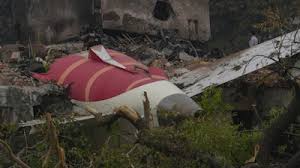Govt’s high-level panel on Air India plane crash holds first meeting; possible causes, necessary SOPs, previous accidents’ records discussed

In a significant step toward understanding the recent Air India plane crash and preventing future tragedies, the Indian government’s high-level committee held its first formal meeting this week. The panel, composed of top officials from civil aviation, home affairs, defense, intelligence agencies, and disaster response authorities, gathered in New Delhi to initiate a broader safety review beyond the technical investigation already underway.
Setting the Stage: Why This Panel Matters
The formation of this high-powered committee comes in the aftermath of one of India’s most devastating air disasters in recent years. The Air India Flight AI-171, en route from Dubai to Ahmedabad, crashed while attempting to land at Sardar Vallabhbhai Patel International Airport. The accident resulted in the deaths of over 240 people onboard, as well as several casualties on the ground.
While the Aircraft Accident Investigation Bureau (AAIB) is leading a formal technical investigation, the central government decided to form a separate committee to examine broader issues such as crisis response, inter-agency coordination, passenger safety protocols, and historical patterns in air accidents.
This two-pronged strategy—one focused on technical findings and the other on systemic policy review—signals a more serious and structured approach to aviation safety than what has been seen in past crashes.
Who’s on the Panel?
The panel is chaired by Union Home Secretary Govind Mohan and includes senior representatives from the Ministry of Civil Aviation, the Directorate General of Civil Aviation (DGCA), the Bureau of Civil Aviation Security (BCAS), the Indian Air Force, the Intelligence Bureau (IB), and the National Disaster Response Force (NDRF). State officials from Gujarat, where the crash occurred, are also part of the discussions.
By involving multiple agencies, the government aims to evaluate the crash from every possible angle—technical, operational, administrative, and logistical.
What Was Discussed in the First Meeting?
The first meeting focused on three main themes:
1. Exploring the Possible Causes of the Crash
While the AAIB is already analyzing the black box data, cockpit voice recordings, and aircraft maintenance history, the government panel took an initial overview of potential causes. These include:
- Pilot error or fatigue
- Mechanical failure (especially with landing gear or engine thrust)
- Weather-related complications during descent
- Runway condition or navigational aid malfunction
Though it’s too early to draw conclusions, the panel stressed the importance of cross-referencing ongoing findings with past accident patterns.
2. Standard Operating Procedures (SOPs) Under Scrutiny
A major area of concern was whether the existing SOPs for flight safety, emergency response, and inter-agency coordination are robust and well-practiced. Officials reviewed how quickly emergency services responded to the incident, how efficiently hospitals managed the mass casualty situation, and whether passengers’ families received timely updates and support.
The committee agreed that current SOPs may need significant revision, especially in the following areas:
- Airport emergency response drills
- Coordination between air traffic control and local disaster agencies
- Passenger evacuation protocols and onboard safety briefings
- Family support and communication lines post-crash
3. Learning from Previous Accidents
The panel also examined a database of earlier air crashes in India, particularly the 2010 Mangaluru crash and the 2020 Kozhikode accident, both of which involved similar landing issues. Officials analyzed commonalities in causes and gaps in safety implementation.
The purpose was not just academic. By understanding what went wrong in the past—and what corrective steps were taken or ignored—the panel hopes to craft new guidelines that are realistic and enforceable.
Timeline and Next Steps
The government has set a deadline of three months for the panel to submit its recommendations. Over the coming weeks, the committee plans to:
- Conduct consultations with aviation experts and safety engineers
- Review international best practices from agencies like the US FAA and UK’s Civil Aviation Authority
- Simulate crisis scenarios to test real-time agency coordination
- Recommend changes to pilot training, flight monitoring systems, and emergency planning
The final report will not only outline the lessons learned from this tragedy but also propose policy and procedural changes to minimize the risk of future disasters.
Why This Approach Is Different
One of the persistent criticisms of India’s aviation safety apparatus has been a lack of systemic reform after past tragedies. Investigations are often slow, findings are released months or years later, and even then, enforcement of recommendations is sporadic.
This time, the high-level panel is seen as a serious attempt to break that pattern. By involving multiple arms of the government from day one, the authorities seem more committed to creating a lasting, institutional safety framework.
Furthermore, families of crash victims and aviation professionals alike have called for transparency and accountability. The panel’s willingness to look beyond immediate causes and into larger structural issues is being welcomed by civil society.
Final Thoughts
The tragedy of Flight AI-171 has left deep scars—not just on the families of those who lost their lives, but also on the nation’s sense of security in air travel. Yet, from this devastation emerges a critical opportunity for reform.
The government’s decision to initiate a comprehensive, multi-agency review shows a long-overdue shift toward proactive aviation safety. If implemented effectively, the findings from this panel could become a turning point in how India manages air travel risk—not just in terms of equipment or weather, but in building a culture of preparedness, professionalism, and accountability.
What remains to be seen is whether the recommendations are bold enough—and more importantly, whether they are enforced with the seriousness this tragedy demands.






